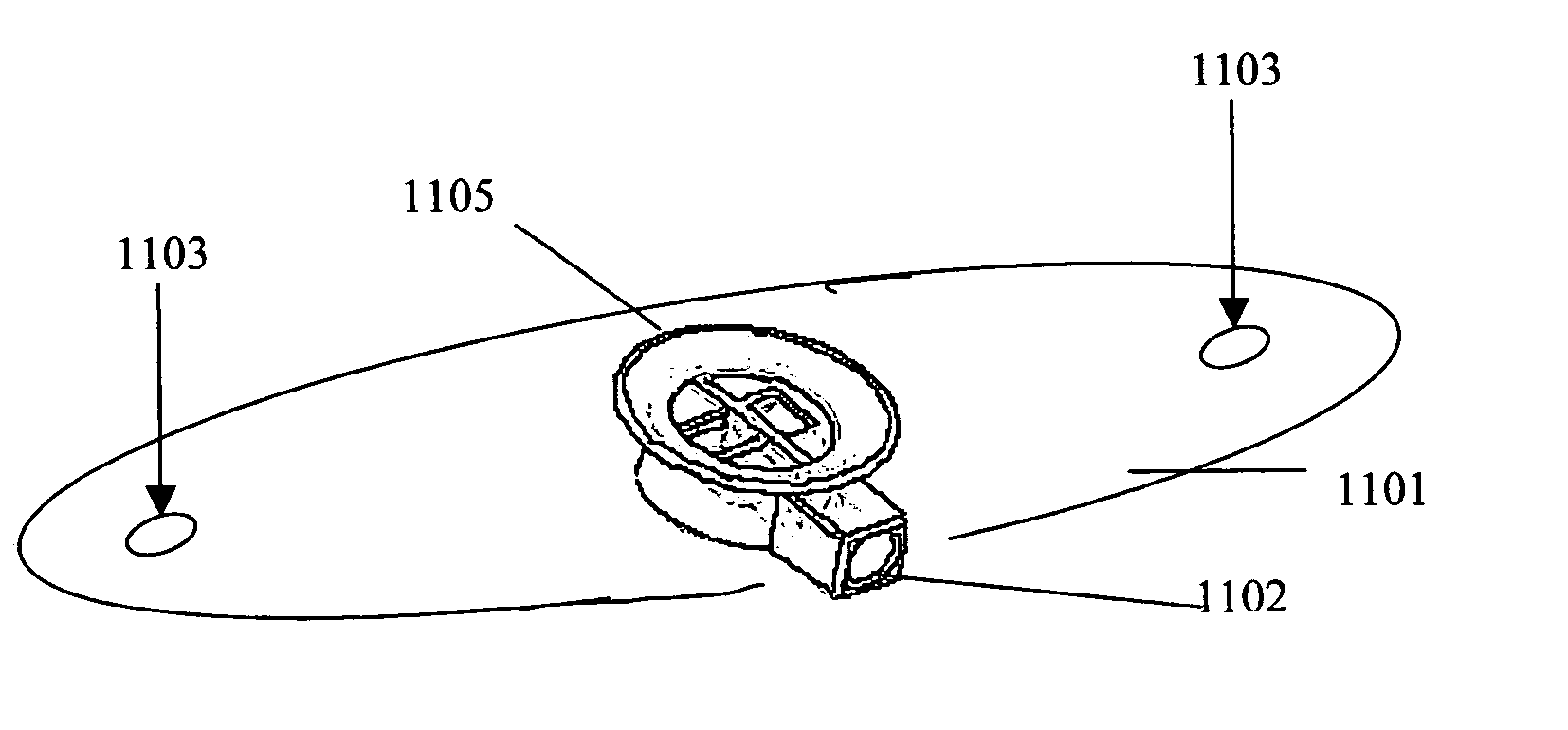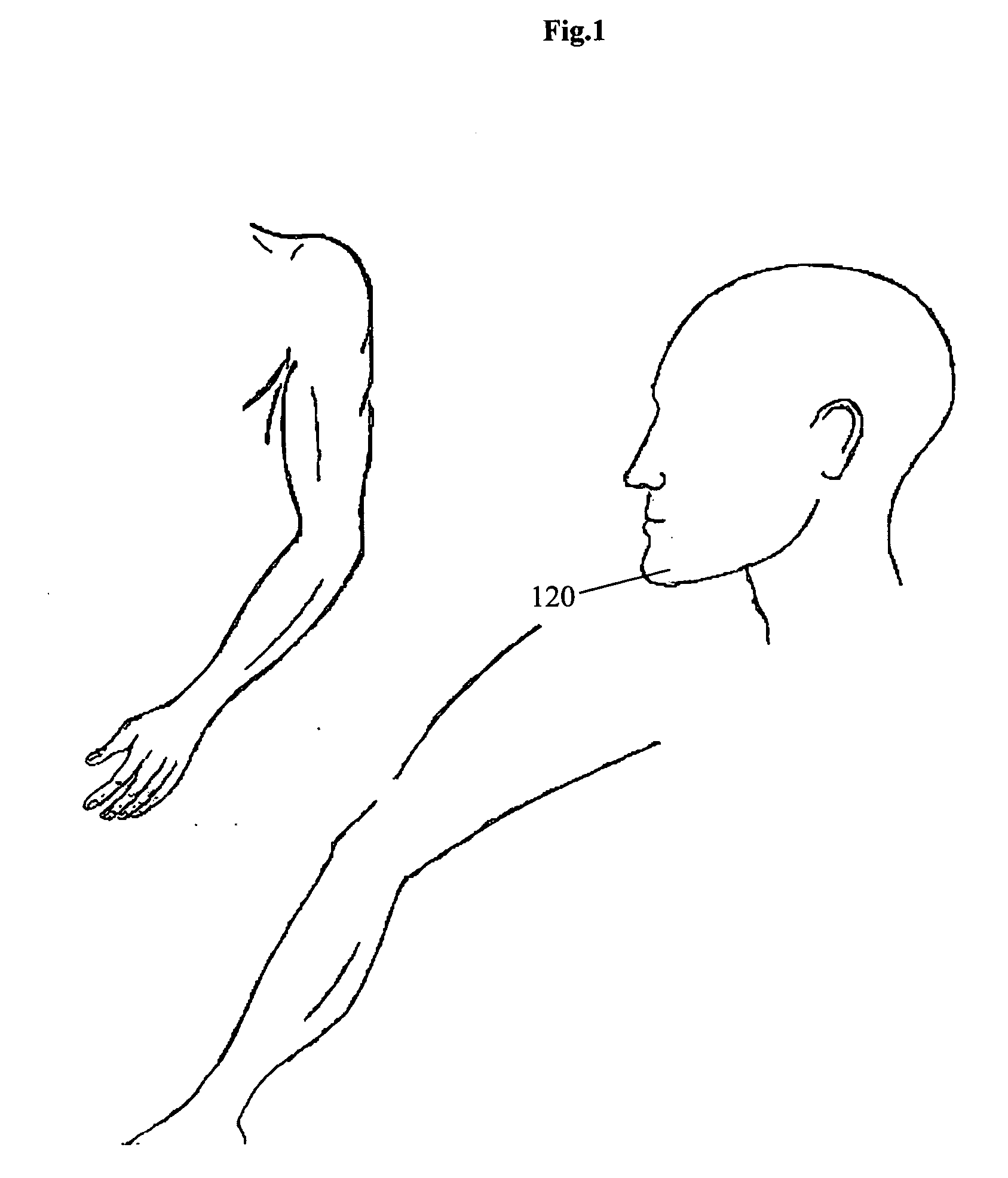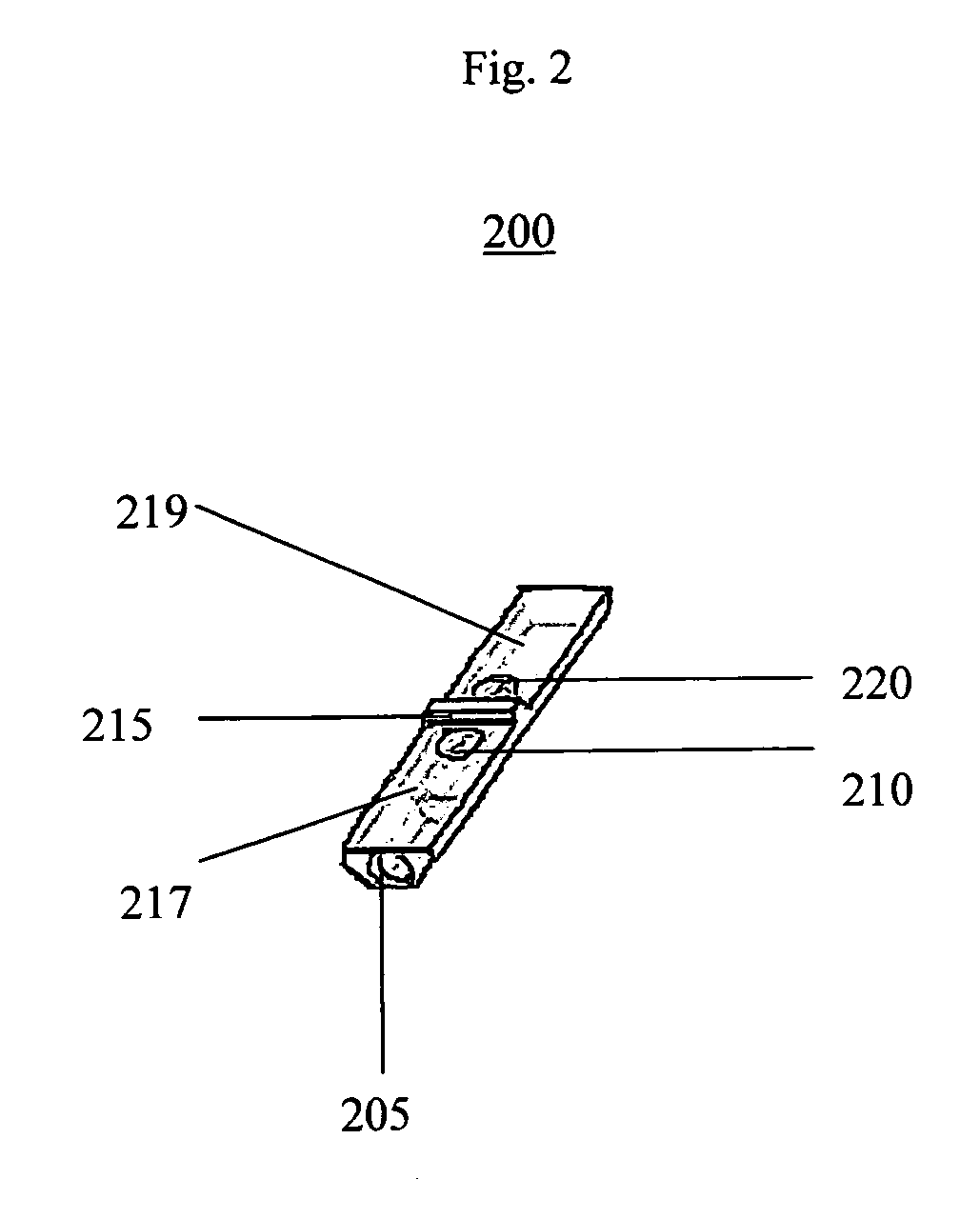Physiological monitoring system and improved sensor device
a monitoring system and sensor technology, applied in the field of physiological monitoring system and improved sensor device, can solve the problems of artificial detection barriers, inability to quantify the degree of hypoxemia present, and sensitivity to high levels of optical or electric interferen
- Summary
- Abstract
- Description
- Claims
- Application Information
AI Technical Summary
Benefits of technology
Problems solved by technology
Method used
Image
Examples
Embodiment Construction
[0042] The present invention is directed toward improving and expanding how physiological characteristics are measured by positioning novel sensing devices in non-conventional skin regions, particularly those regions having high levels of blood perfusion. While techniques for efficient and accurate measurement of blood oxygenation levels are known generally, they have not been effectively applied to certain non-conventional skin regions, such as the chin of a person. The chin is an appropriate sensing region because it has a relatively high number of capillary loops per mm2 of the skin as compared to the other regions, such as digits or ear lobes.
[0043] Referring to FIG. 1, it is observed that conventional skin regions have relatively low number of blood capillary loops per mm2 110 of the skin surface. For example, the nose has 100 blood capillary loops per mm2, while the ear has 38 blood capillary loops per mm2. Alternatively, there are approximately 149 to 158 blood capillary loo...
PUM
 Login to View More
Login to View More Abstract
Description
Claims
Application Information
 Login to View More
Login to View More - R&D
- Intellectual Property
- Life Sciences
- Materials
- Tech Scout
- Unparalleled Data Quality
- Higher Quality Content
- 60% Fewer Hallucinations
Browse by: Latest US Patents, China's latest patents, Technical Efficacy Thesaurus, Application Domain, Technology Topic, Popular Technical Reports.
© 2025 PatSnap. All rights reserved.Legal|Privacy policy|Modern Slavery Act Transparency Statement|Sitemap|About US| Contact US: help@patsnap.com



